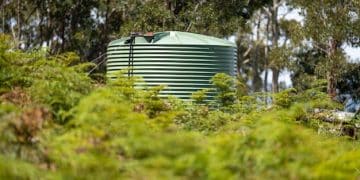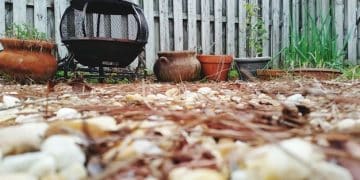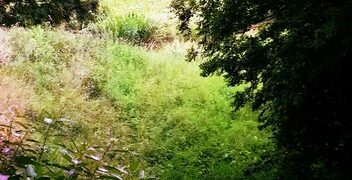Sustainable Gardening: Grow Food, Reduce Impact in 2025
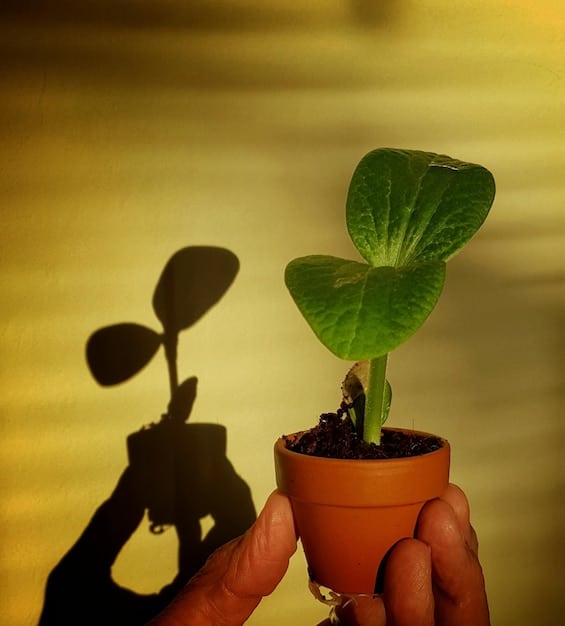
Sustainable gardening offers a practical path to cultivating your own food, significantly reducing your environmental footprint, and connecting with nature’s cycles, embracing eco-friendly practices that benefit both planet and plate.
As the world pivots towards a more conscious way of living, the timeless practice of gardening is being reimagined through the lens of sustainability. Sustainable Gardening: Grow Your Own Food and Reduce Your Environmental Impact in 2025 is not just a trend; it’s a vital, empowering movement. Imagine stepping into your backyard and harvesting fresh, organic produce, knowing that every fruit, vegetable, and herb grown has minimized its ecological footprint. This isn’t just about food security; it’s about fostering biodiversity, conservando resources, and contributing to a healthier planet, one garden bed at a time. It’s an invitation to reconnect with the earth, understand the intricate dance of nature, and actively participate in creating a more resilient future.
The Imperative of Sustainable Gardening in the 21st Century
Sustainable gardening has transcended a mere hobby to become a critical component of environmental stewardship in the modern era. The traditional agricultural model, heavily reliant on monoculture, synthetic pesticides, and chemical fertilizers, has taken a significant toll on our ecosystems, contributing to soil degradation, water pollution, and a drastic loss of biodiversity. Recognizing these impacts, a growing number of individuals are seeking alternative methods to produce food that align with ecological principles. This shift is not just about growing food; it’s about cultivating a healthier relationship with our environment.
Addressing Environmental Challenges Through Your Garden
Our planet faces unprecedented environmental challenges, from climate change and resource depletion to habitat loss and pollution. Sustainable gardening offers tangible solutions to many of these issues, right in our backyards. By choosing to grow food using sustainable practices, individuals can directly mitigate their contribution to these global problems. It reduces the reliance on large-scale industrial agriculture, which is a major emitter of greenhouse gases and a significant consumer of fossil fuels.
One of the most immediate benefits is the reduction of food miles. When you grow your own produce, it eliminates the need for transportation from distant farms, thereby cutting down carbon emissions associated with distribution and packaging. Furthermore, sustainable methods focus on building healthy soil, which acts as a carbon sink, sequestering atmospheric carbon and helping to combat climate change.
- Reduced Carbon Footprint: Growing local eliminates long-distance transportation of food.
- Soil Health Improvement: Organic matter in soil sequesters carbon.
- Water Conservation: Efficient irrigation and mulching minimize water waste.
- Biodiversity Support: Native plants and varied crops attract beneficial insects and wildlife.
The Economics and Health Benefits of Growing Your Own
Beyond the environmental advantages, sustainable gardening presents compelling economic and health incentives. For many households, cultivating their own fruits, vegetables, and herbs can lead to substantial savings on grocery bills. Organic produce, often more expensive in stores, becomes accessible and affordable when grown at home. This economic benefit extends beyond just the initial purchase, as homegrown food typically boasts superior freshness and nutritional content compared to store-bought alternatives that may have traveled long distances or sat on shelves for days.
The health benefits are equally impressive. Consuming freshly harvested produce means higher vitamin and mineral content, as nutrients degrade over time after harvest. Moreover, knowing exactly what goes into your food—free from synthetic pesticides and herbicides—provides peace of mind and contributes to a cleaner, healthier diet. The physical activity involved in gardening itself offers significant health advantages, serving as a low-impact exercise that improves cardiovascular health, strengthens muscles, and reduces stress. The act of nurturing plants and watching them grow can also have a profound effect on mental well-being, fostering a sense of accomplishment and connection to nature.
In essence, sustainable gardening is a holistic approach, intertwining ecological responsibility with personal well-being. It empowers individuals to become active participants in creating a more sustainable food system, fostering resilience within communities, and leaving a healthier legacy for future generations. Embracing these practices in 2025 means stepping into a future where our gardens are not just sources of food, but vibrant ecosystems contributing to the health of our planet and ourselves.
Core Principles of Sustainable Gardening: A 2025 Blueprint
To truly embrace sustainable gardening, it’s essential to understand its foundational principles. These aren’t rigid rules but flexible guidelines that encourage ecological balance and efficiency within your garden space. The year 2025 brings an increased awareness and refined techniques, making these principles more actionable than ever. It’s about working with nature, not against it, creating a thriving ecosystem that supports both plant life and local biodiversity.
Building Healthy Soil: The Foundation of Life
The cornerstone of any sustainable garden is healthy soil. Often overlooked, soil is a complex ecosystem teeming with microorganisms, fungi, and beneficial invertebrates that are crucial for nutrient cycling and plant health. In sustainable gardening, the focus shifts from merely feeding plants to feeding the soil itself. This involves enriching the soil with organic matter, which improves its structure, water retention, and nutrient availability.
Composting is perhaps the most fundamental practice for building healthy soil. By recycling kitchen scraps, yard waste, and other organic materials, you create nutrient-rich compost that can be integrated into your garden beds. This not only diverts waste from landfills but also provides a continuous supply of vital nutrients for your plants. Mulching is another invaluable technique. Applying a layer of organic material like wood chips, straw, or leaves around your plants helps suppress weeds, retain soil moisture, and gradually break down to enrich the soil over time.
Minimizing soil disturbance, often referred to as “no-till” or “no-dig” gardening, is gaining significant traction. Tilling can disrupt the delicate soil structure and harm beneficial soil organisms. By avoiding aggressive digging and turning, you preserve the soil’s natural layers and foster a healthier microbial community. Regular soil testing can also help identify any nutrient deficiencies or imbalances, allowing for targeted, sustainable amendments rather than indiscriminate fertilization.
Efficient Water Management: Growing Smarter
Water is a precious resource, and sustainable gardening places a strong emphasis on smart water usage. Traditional irrigation can be highly inefficient, leading to significant waste through evaporation and runoff. In 2025, advanced techniques and a mindful approach to watering are paramount. Rainwater harvesting is an excellent way to capture and store water for garden use, reducing reliance on municipal water sources. Rain barrels or larger cisterns can collect water from rooftops, providing a sustainable supply free from chlorine and other chemicals often found in tap water.
Drip irrigation systems and soaker hoses provide water directly to the plant roots, minimizing evaporation and runoff. These systems are far more efficient than overhead sprinklers. Timing is also critical; watering early in the morning or late in the evening reduces water loss due to evaporation. Furthermore, selecting drought-tolerant and native plant species for your region can drastically cut down on water requirements once established. Mulching, as mentioned earlier, also plays a crucial role in water retention by preventing rapid evaporation from the soil surface.
Biodiversity and Pest Management: Working with Nature
A sustainable garden is a biodiverse one. Encouraging a wide variety of plant and animal life creates a resilient ecosystem that is naturally resistant to pests and diseases. Monoculture, where a single crop is grown over a large area, depletes soil nutrients and creates a welcome mat for specific pests. Instead, sustainable gardeners practice companion planting, where different plant species are grown together because they benefit each other. For example, marigolds can deter nematodes, and nasturtiums can act as a trap crop for aphids.
Attracting beneficial insects and wildlife is key to natural pest control. Planting flowers that provide nectar and pollen, such as dill, fennel, and sunflowers, can draw in predatory insects like ladybugs, hoverflies, and lacewings, which prey on common garden pests. Providing water sources and shelter can also encourage birds and other helpful animals to visit your garden. When pest issues do arise, sustainable gardeners opt for organic, least-toxic solutions, such as neem oil, insecticidal soaps, or physical removal, rather than synthetic pesticides that can harm beneficial organisms and pollute water systems.
- Companion Planting: Strategically pairing plants for mutual benefit and pest deterrence.
- Beneficial Insect Habitats: Providing food and shelter for natural pest predators.
- Crop Rotation: Preventing pest buildup and nutrient depletion in specific areas.
- Organic Pest Control: Utilizing natural substances and methods over synthetic chemicals.
By integrating these core principles, gardeners in 2025 can cultivate not just food, but healthier, more vibrant ecosystems, making a tangible difference in their local environment and contributing to global sustainability efforts.
Designing Your Sustainable Garden: From Concept to Harvest
The success of a sustainable garden lies not just in the daily practices, but in its initial design. A well-thought-out plan optimizes space, resources, and effort, making the gardening journey more enjoyable and productive. In 2025, garden design embraces efficiency, aesthetics, and ecological synergy, ensuring every element serves multiple purposes. This section guides you through the process of conceptualizing and executing a garden plan that is both bountiful and eco-conscious.
Site Assessment: Understanding Your Garden’s Microclimate
Before digging in, take the time to thoroughly assess your chosen garden site. Every location has a unique microclimate – specific conditions of sunlight, wind, and existing soil. Observe your garden throughout the day and across seasons to understand sunlight patterns. Which areas receive full sun (6+ hours), partial sun (3-6 hours), or shade (less than 3 hours)? This will dictate where you can successfully grow sun-loving vegetables versus shade-tolerant herbs.
Consider the prevailing wind patterns. Strong winds can dehydrate plants and cause physical damage. Can existing structures or new plantings serve as windbreaks? Drainage is another critical factor. Does water accumulate in any areas after rain, indicating poor drainage, or does it run off quickly, suggesting sandy soil? Understanding these nuances allows you to choose appropriate plants and implement necessary soil amendments. Finally, identify any existing vegetation, especially trees or large shrubs, as their root systems and canopy might compete with your garden plants for water and nutrients.
Layout and Zoning: Maximizing Space and Efficiency
With your site assessment complete, you can begin to plan your garden layout. Consider different types of garden beds: raised beds for ease of access and excellent drainage, or in-ground beds for larger-scale planting. Think about accessibility; paths should be wide enough for comfortable movement and wheelbarrows. When designing pathways, consider permeable materials like gravel or wood chips to allow water absorption rather than runoff.
Zoning your garden based on plant needs and frequency of interaction can significantly improve efficiency. Place frequently harvested crops or herbs near your kitchen door for convenience. Group plants with similar water, light, and soil requirements together. This “hydrozoning” or “ecozoning” helps optimize irrigation and care. Vertical gardening solutions, such as trellises, arbors, or wall-mounted planters, are excellent for maximizing space in smaller areas, allowing you to grow more food in a compact footprint. Integrating fruit trees and berry bushes into your landscape, rather than keeping them separate, can also enhance biodiversity and productivity.
Selecting the Right Plants: Native, Resilient, and Productive
The choice of plants is paramount in a sustainable garden. Prioritize varieties that are well-suited to your local climate and soil conditions, as this reduces the need for constant intervention. Native plants are an excellent choice as they have evolved to thrive in your region without excessive watering or fertilization. They also provide crucial habitat and food for local wildlife, supporting regional biodiversity.
Opt for heirloom and open-pollinated seeds whenever possible. These varieties allow you to save seeds from your most successful plants for future seasons, fostering genetic diversity and reducing reliance on external seed suppliers. Research disease-resistant varieties to minimize the need for chemical treatments. Consider incorporating a mix of annuals (like most vegetables) and perennials (fruit trees, berry bushes, asparagus) to create a more stable and less labor-intensive garden over time. Finally, think about succession planting, where you plant crops in stages to ensure a continuous harvest throughout the growing season, maximizing your garden’s output. By carefully planning and selecting, your sustainable garden will become a resilient and abundant source of fresh produce.
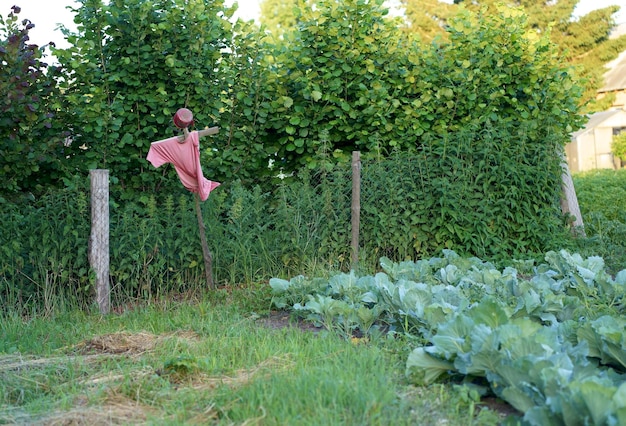
Practical Sustainable Gardening Techniques for 2025
Moving beyond the foundational principles and design, practical application of sustainable gardening techniques is where the real magic happens. In 2025, gardeners are employing an array of smart, nature-friendly methods to cultivate healthier plants, conserve resources, and simplify their work. These techniques are often interconnected, creating a holistic system that benefits the entire garden ecosystem.
Embracing Composting and Vermicomposting
Composting is not just a sustainable practice; it’s an economic one. It transforms kitchen scraps, yard waste, and other organic materials into a rich, dark, nutrient-dense soil amendment. Instead of sending these materials to landfills, where they produce methane, composting diverts waste and creates valuable ‘black gold’ for your garden. There are various composting methods suitable for different spaces:
- Hot composting: Fast, efficient, requires active turning and specific carbon-to-nitrogen ratios.
- Cold composting: Slower, less labor-intensive, suitable for smaller piles.
- Vermicomposting: Uses red wiggler worms to break down organic matter in a contained bin, perfect for apartments or small spaces. The worm castings produced are an exceptional soil fertilizer.
Regularly adding compost improves soil structure, aeration, drainage, and water retention, while steadily releasing essential nutrients to plants. It’s a continuous loop of waste reduction and soil enrichment.
Water Conservation and Efficient Irrigation
As identified in previous sections, water is a critical resource. Implementing practical water-saving techniques is non-negotiable for sustainable gardening in 2025.
- Mulching: A 2-4 inch layer of organic mulch (straw, wood chips, shredded leaves) around plants significantly reduces water evaporation from the soil. It also suppresses weeds, which compete for water, and moderates soil temperature.
- Rainwater Harvesting: Install rain barrels or larger cisterns to collect rainwater from your roof. This water is free from chlorine and other chemicals found in tap water, making it ideal for plants.
- Drip Irrigation/Soaker Hoses: These systems deliver water directly to the plant’s root zone, minimizing waste from evaporation and runoff. They are far more efficient than overhead sprinklers.
- Grouping Plants: Arrange plants with similar water needs together. This prevents overwatering some plants and underwatering others, ensuring efficient water distribution.
Observe your plants and soil regularly to understand their water needs. Stick a finger into the soil; if it feels dry an inch or two down, it’s time to water. Deep, infrequent watering encourages deeper root growth, making plants more drought-tolerant.
Natural Pest and Disease Management
Avoiding synthetic pesticides is central to sustainable gardening. These chemicals can harm beneficial insects, pollute water, and negatively impact human health. Instead, gardeners in 2025 rely on ecological strategies to manage pests and diseases.
- Crop Rotation: Annually rotating vegetable families to different beds prevents the buildup of specific soil-borne pests and diseases that target certain crops.
- Companion Planting: Strategically plant certain species together. Examples include marigolds to deter nematodes, nasturtiums as a trap crop for aphids, and dill or coriander to attract beneficial predatory insects.
- Physical Barriers: Use row covers to protect seedlings from early spring insect attacks, or hand-pick larger pests like tomato hornworms. Sticky traps can also be effective for certain flying insects.
- Attracting Beneficial Insects: Plant a diverse array of pollinator-friendly flowers (cosmos, zinnias, dill, parsley) to provide nectar and pollen for predatory insects like ladybugs, hoverflies, and lacewings, which feed on common garden pests.
- Maintaining Plant Health: Healthy plants are naturally more resistant to pests and diseases. Ensure proper soil nutrition, adequate water, and appropriate sunlight. Address problems early before they escalate.
By implementing these practical techniques, gardeners harness the power of natural processes, creating a vibrant, resilient, and productive garden that thrives in harmony with the environment. It transforms a simple plot of land into a dynamic ecosystem, demonstrating that growing your own food sustainably is not only possible but inherently rewarding.
Beyond the Plate: The Broader Impact of Growing Your Own Food Sustainably
The benefits of sustainable gardening extend far beyond the immediate harvest. While providing fresh, healthy food for your table is a significant advantage, the ripple effects on local ecosystems, community resilience, and personal well-being are equally profound. In 2025, understanding this broader impact strengthens the resolve to embrace and advocate for these eco-conscious practices.
Fostering Biodiversity and Ecosystem Health
A sustainable garden is a miniature ecosystem, and its design and management directly influence local biodiversity. Unlike monoculture farms that prioritize a single crop, a diverse home garden provides varied habitats and food sources. Planting a mix of native flowers, herbs, and vegetables attracts a wider array of pollinators—bees, butterflies, and hummingbirds—which are crucial for the reproduction of many plants, including our food crops. This support for pollinators is vital, especially given their global decline.
Furthermore, diverse planting and avoidance of synthetic pesticides encourage beneficial insects and microorganisms, creating a natural balance that reduces pest outbreaks. This integrated approach nurtures healthy soil life, which in turn supports stronger plants. Your garden effectively becomes a small wildlife sanctuary, offering refuge and sustenance for birds, small mammals, and essential invertebrates, thereby contributing to the overall health and resilience of the local ecosystem. Every patch of cultivated land, no matter how small, adds to the network of green spaces that support nature.
Strengthening Community and Local Food Systems
Sustainable gardening can be a catalyst for community building. When individuals cultivate their own food, it reduces reliance on complex, globalized food supply chains, fostering a more robust local food system. This can lead to increased interest in farmers’ markets, community-supported agriculture (CSA) programs, and local seed exchanges. Sharing gardening knowledge, surplus produce, and even tools strengthens neighborhood bonds.
Community gardens, where multiple individuals or families share a common growing space, are powerful examples of this. They provide access to fresh produce for those without private land, educate new gardeners, and create vibrant social hubs. In scenarios of disruption to larger food systems, locally grown food acts as a vital safety net, enhancing communal food security and resilience. This localized approach empowers communities to have greater control over their food sources, promoting self-sufficiency and mutual support.
Cultivating Mindfulness and Well-being
Beyond the ecological and communal benefits, sustainable gardening profoundly impacts personal well-being. The act of tending a garden is inherently grounding and meditative. It encourages mindfulness, forcing us to slow down, observe nature’s rhythms, and engage our senses. The feeling of soil between your fingers, the scent of fresh earth, the sight of a perfect strawberry ripening—these experiences foster a deep connection to the natural world.
Gardening provides gentle physical exercise, reduces stress, and can even improve mental health by offering a sense of purpose and achievement. Witnessing the cycle of growth from seed to harvest instills patience and provides a profound sense of satisfaction. It’s an opportunity to learn, experiment, and appreciate the intricate processes of life. In a fast-paced world, sustainable gardening offers a sanctuary, a space for reflection, and a tangible way to contribute positively to both your personal health and the health of the planet. Embracing sustainable gardening in 2025 is an investment in a richer, more connected future for individuals and the wider world.
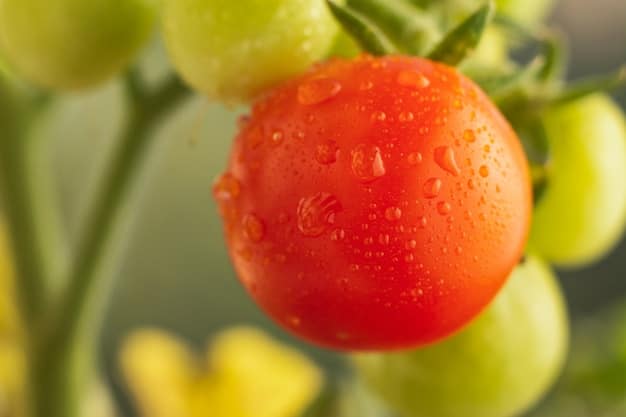
Common Pitfalls and How to Avoid Them in Your Sustainable Garden
Embarking on a sustainable gardening journey is exciting, but like any endeavor, it comes with its own set of challenges. Understanding common pitfalls before you encounter them can save you time, effort, and heartache. In 2025, with increasing awareness and resources, it’s easier than ever to side-step these obstacles and ensure your sustainable garden thrives. Being proactive and informed is key to long-term success.
Overwatering or Underwatering: The Balance Challenge
One of the most frequent mistakes new gardeners make is improper watering. Both overwatering and underwatering can lead to significant plant stress and even death. Overwatering drowns roots, leading to rot and fungal diseases, while underwatering causes wilting, stunted growth, and nutrient deficiencies.
* Solution: The “finger test” is your best friend. Stick your finger an inch or two into the soil. If it feels dry, it’s time to water. If it’s moist, wait. Invest in efficient irrigation systems like drip lines, which deliver water directly to the roots and minimize waste. Mulching is critical for retaining soil moisture and preventing rapid evaporation. Also, consider the specific needs of your plants; some prefer consistently moist soil, while others thrive in drier conditions. Deeper, less frequent watering encourages stronger root systems.
Neglecting Soil Health: A Hidden Pitfall
Too often, gardeners focus solely on the plants themselves, overlooking the vital ecosystem beneath the surface—the soil. Treating soil merely as an anchor for plants, rather than a living medium, is a significant pitfall. Soil depletion and poor soil structure lead to weak plants susceptible to pests and diseases, and an ongoing need for synthetic inputs.
* Solution: Prioritize building healthy, living soil. Incorporate generous amounts of organic matter, such as compost, leaf mold, and well-rotted manure, regularly. This improves soil structure, water retention, drainage, and nutrient availability. Practice no-till gardening to preserve soil organisms and structure. Consider cover crops during off-seasons to add nutrients and prevent erosion. Regular soil testing can help you understand your soil’s specific needs and inform targeted, organic amendments.
Ignoring Site-Specific Conditions: Planting the Wrong Plant in the Wrong Place
Every garden site is unique, with its own microclimate, light exposure, and soil type. A common mistake is trying to grow plants that are simply not suited to your specific conditions, leading to struggling plants and frustration. Attempts to force plants to thrive in unsuitable environments often result in higher water usage, pest problems, and disappointing yields.
* Solution: Conduct a thorough site assessment before planting. Understand your garden’s sunlight patterns throughout the day and year. Observe wind exposure and drainage. Research the specific needs of the plants you wish to grow regarding light, water, and soil pH. Opt for native plants or varieties known to thrive in your local climate. If your soil is heavy clay or very sandy, amend it accordingly with organic matter. By matching the right plant to the right place, you set your garden up for success and reduce the need for constant intervention.
Underestimating the Importance of Diversity: Monoculture in Miniature
Even in a home garden, the temptation to grow large quantities of a single favorite crop can lead to issues akin to large-scale monoculture. This can deplete specific soil nutrients and create an open invitation for pests and diseases that specialize in that particular plant. A lack of diverse plant life also means fewer beneficial insects and a less resilient garden ecosystem.
* Solution: Embrace biodiversity. Practice companion planting, strategically placing different plant species together that benefit one another. Rotate your crops annually to prevent the buildup of soil-borne pathogens and pests. Plant a wide variety of flowers alongside your vegetables to attract pollinators and beneficial predatory insects. Incorporate native plants to support local wildlife. A diverse garden is a resilient garden, less prone to widespread pest and disease outbreaks, and more capable of sustaining itself naturally. By consciously avoiding these common pitfalls, your sustainable gardening journey in 2025 will be more rewarding, productive, and truly beneficial to both you and the environment.
| Key Practice | Brief Description |
|---|---|
| ♻️ Build Healthy Soil | Enrich soil with compost and organic matter to improve structure and nutrient content. |
| 💧 Conserve Water | Utilize rainwater harvesting, drip irrigation, and mulching to minimize water waste. |
| 🦋 Enhance Biodiversity | Plant diverse species to attract beneficial insects and support local wildlife. |
| 🚫 Natural Pest Control | Employ companion planting and organic methods instead of synthetic pesticides. |
Frequently Asked Questions About Sustainable Gardening
▼
Sustainable gardening involves cultivating plants using methods that minimize environmental impact and conserve resources. In 2025, it’s crucial because it offers tangible solutions to climate change, biodiversity loss, and resource depletion, allowing individuals to grow their own food while promoting ecological balance and personal well-being.
▼
Begin by incorporating organic matter like compost, leaf mold, or aged manure into your garden beds. Avoid excessive tilling to preserve soil structure and beneficial microorganisms. Mulching also helps enrich the soil over time and retain moisture, fostering a healthier, more vibrant growing medium for your plants.
▼
Key techniques include rainwater harvesting (using rain barrels), installing drip irrigation or soaker hoses to deliver water directly to roots, and generously applying mulch around plants to reduce evaporation. Grouping plants with similar water needs also helps optimize irrigation and prevents waste.
▼
Focus on attracting beneficial insects by planting diverse flowers, practicing companion planting, and rotating crops to prevent pest buildup. Physical barriers like row covers, hand-picking larger pests, and using organic sprays like neem oil are also effective alternatives to synthetic pesticides, maintaining ecological balance.
▼
Growing your own food sustainably significantly reduces your carbon footprint by eliminating food miles and packaging waste. It also enhances local biodiversity, improves soil health, conserves water, and supports a resilient local food system, contributing to a healthier environment and community.
Conclusion
Sustainable Gardening: Grow Your Own Food and Reduce Your Environmental Impact in 2025 is far more than a trend; it’s a fundamental reimagining of our relationship with food and the planet. By embracing this approach, we move beyond merely consuming to actively participating in ecological restoration. Each choice—from composting kitchen scraps and conserving water to fostering biodiversity and managing pests naturally—contributes to a healthier ecosystem. The act of cultivating your own food becomes a profound statement of environmental responsibility, personal well-being, and community resilience. As we look to 2025 and beyond, integrating sustainable gardening practices into our lives is not just a beneficial hobby, but an essential step toward a more sustainable and bountiful future for all.
